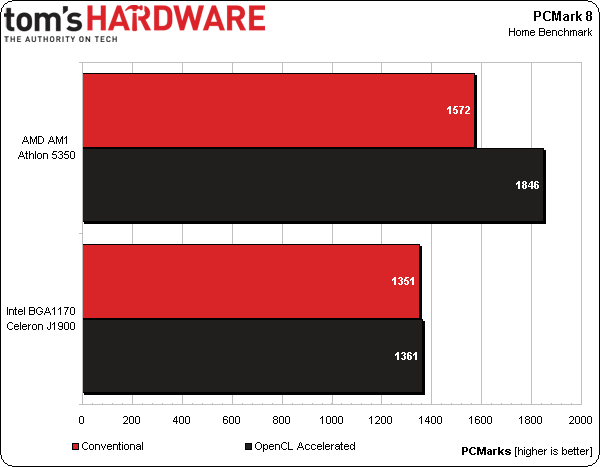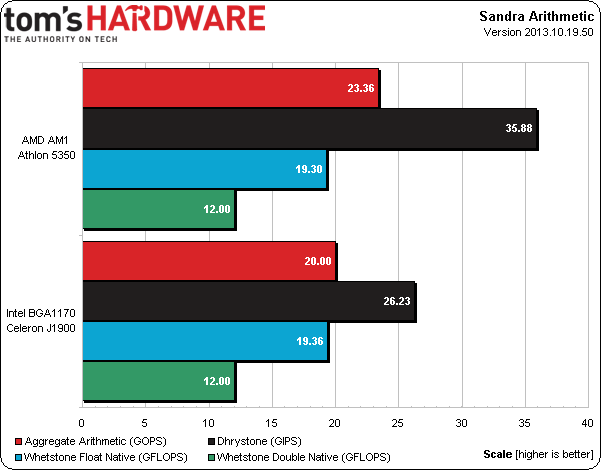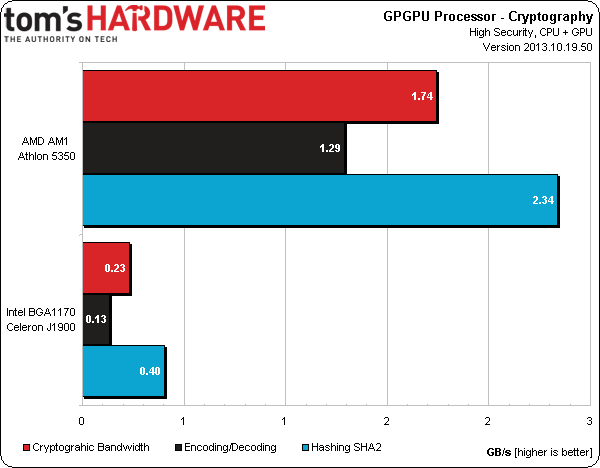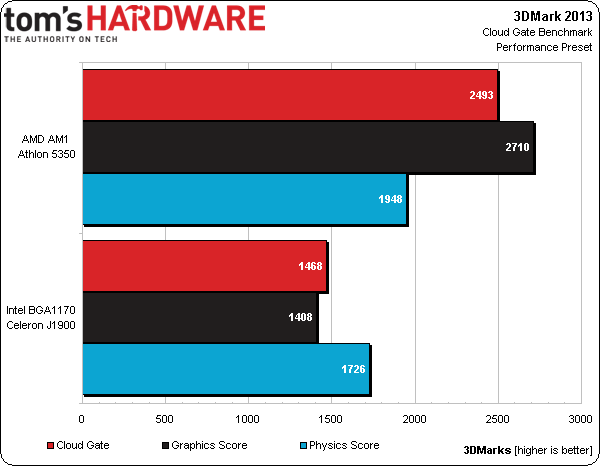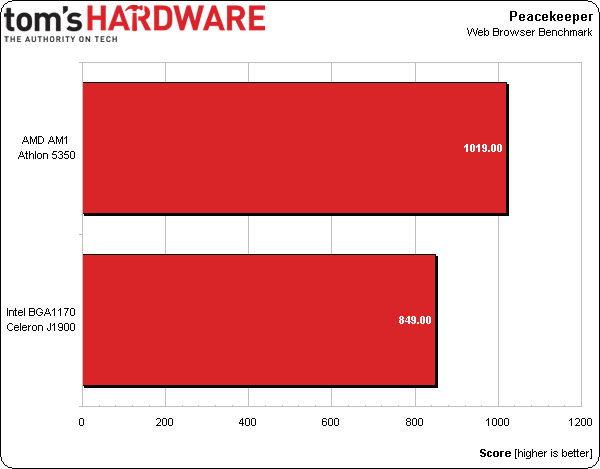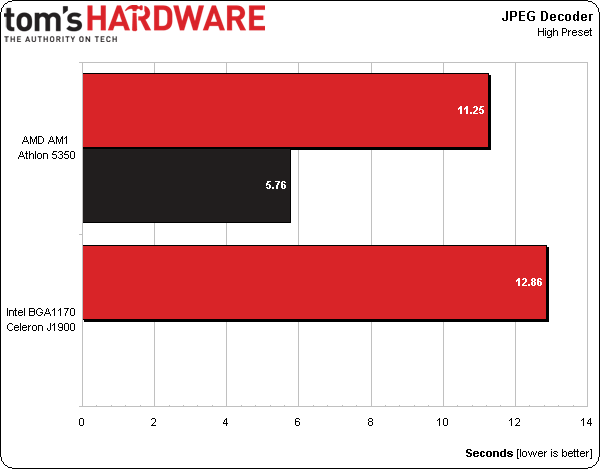AMD Athlon 5350 And AM1 Platform Review: Kabini In A Socket
AMD is repackaging the mobile-focused Kabini APU for use on the desktop, and tucking them under the familiar Athlon and Sempron brands. We take a closer look at the company's socketed AM1 platform and compare its performance to Intel's Bay Trail-D.
Synthetic Benchmarks
We begin with PCMark 8, which should help establish some expectations of the real-world testing.
The Home test is designed to reflect typical productivity workloads, including Web browsing, writing, gaming, photo editing, and video chat.
The Athlon 5350 beats Intel's Celeron J1900 by about 10% in the CPU-oriented version of the benchmark. But when OpenCL acceleration is enabled, AMD's new APU leads by much more. This shouldn't come as a surprise, given the Athlon's super graphics component and its compute potential.
The Athlon establishes an advantage in the Dhrystone module. Both processors are much more evenly matched in the floating-point-oriented Whetstone metric.
The Athlon 5350 fares well in the GPU-accelerated version of Sandra's cryptography benchmark, where plenty of memory bandwidth and AES-NI support are particularly useful. The Radeon shaders are also quite helpful for hashing.
3DMark's Cloud Gate benchmark gives us a synthetic peek into GPU performance. The Athlon carves out a fairly small advantage in the physics sub-test. However, its graphics score almost doubles the Celeron, which in turn affects the overall outcome.
Futuremark's Peacekeeper Web browsing benchmark affords AMD another win, again in the 10-15% range.
Get Tom's Hardware's best news and in-depth reviews, straight to your inbox.
Fair warning here: this synthetic benchmark was provided by AMD to demonstrate the company's new GPU-powered JPEG decoding acceleration, enabled in the Catalyst 14.8 beta 8 driver used for this review. Of course, we're most interested in how this feature works in the real-world.
Current page: Synthetic Benchmarks
Prev Page Test Systems And Benchmarks Next Page Media Encoding BenchmarksDon Woligroski was a former senior hardware editor for Tom's Hardware. He has covered a wide range of PC hardware topics, including CPUs, GPUs, system building, and emerging technologies.
-
AMD Radeon i hope mini office pc box can be a new trendReply
AM1 can be a potential winner in this market -
Maxx_Power To Toms:Reply
What was the ambient temperature during the testing ? Surely Toms is not testing in an refrigerator ? That idle GPU and CPU temperature at 13 degrees Celsius seems about 10 degrees too low, given that they have to be necessarily above ambient conditions to make physical sense. Perhaps the sensors are not read correctly (wrong offset) ?
For the Dota2 graphs, there seems to be a mistake for the color legend. The difference in color isn't resolution, since the resolution is fixed (right hand top corner of graph at 1080), so my guess is that red/black represents min/avg FPS similar to the 2nd graph on Grid2.
-
nezzymighty Thanks for the article. I agree with your conclusion, as I would probably seek an alternative build for a a "PC-Like Device" as you put it. Seeing AM1 product costs relatively the same to an A4-4000 FM2+ confuses me, as I had originally expected (hoped) AM1 high-end combinations with a motherboard to cost around the $70 mark... If I were to make an AMD HTPC, or a typical AMD business computer, based on prices released by the e-tailers today, it would make more sense for me to build an FM2+ with A4-4000. Maybe prices will reduce in time to make this a more attractive alternative relative to an FM2+ for an HTPC or business computer.Reply -
ykki "Based on our results, I'd guess that AMD's AM1 platform should be able to handle less-demanding MMOs like World of Warcraft, lightweight shooters like Left 4 Dead, and a wide range of even more casual games (such as Angry Birds)."Reply
I think that it is safe to say that it can max out angry birds at 4k :) -
cleeve Reply13061890 said:To Toms:
What was the ambient temperature during the testing ? Surely Toms is not testing in an refrigerator ? That idle GPU and CPU temperature at 13 degrees Celsius seems about 10 degrees too low, given that they have to be necessarily above ambient conditions to make physical sense. Perhaps the sensors are not read correctly (wrong offset) ?
On-die sensors are notoriously inaccurate at low temperatures. In this case that's obvious, but we can only report what the sensors tell us.
13061890 said:For the Dota2 graphs, there seems to be a mistake for the color legend. The difference in color isn't resolution, since the resolution is fixed (right hand top corner of graph at 1080), so my guess is that red/black represents min/avg FPS similar to the 2nd graph on Grid2.
Good catch! Fixed. :)
